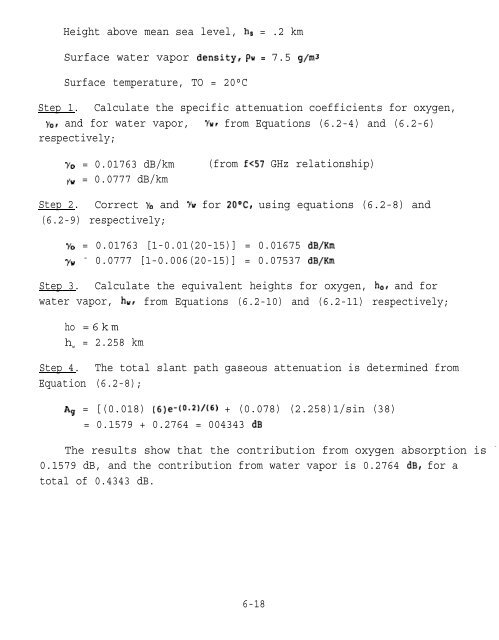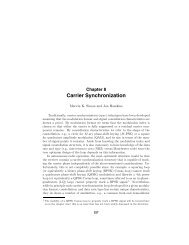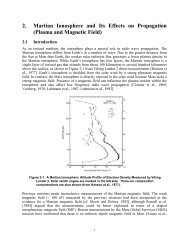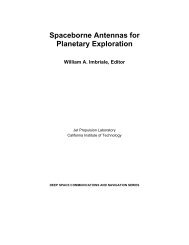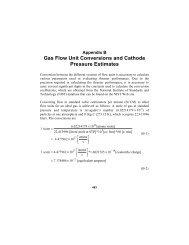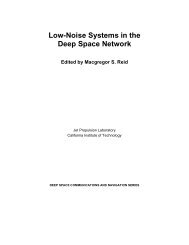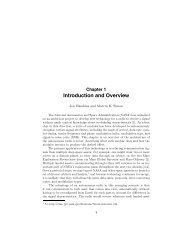Propagation Effects Handbook for Satellite Systems - DESCANSO ...
Propagation Effects Handbook for Satellite Systems - DESCANSO ...
Propagation Effects Handbook for Satellite Systems - DESCANSO ...
You also want an ePaper? Increase the reach of your titles
YUMPU automatically turns print PDFs into web optimized ePapers that Google loves.
Height above mean sea level, hs = .2 km<br />
Surface water vapor density~ PW = 7.5 g/m3<br />
Surface temperature, TO = 20°C<br />
Step 1. Calculate the specific attenuation coefficients <strong>for</strong> oxygen,<br />
YO, and <strong>for</strong> water vapor, YW, from Equations (6.2-4) and (6.2-6)<br />
respectively;<br />
Yo = 0.01763 dB/km<br />
)’W = 0.0777 dB/km<br />
Step 2. Correct YO and<br />
(6.2-9) respectively;<br />
(from fK57 GHz relationship)<br />
YW <strong>for</strong> 20°C, using equations (6.2-8) and<br />
?’0 = 0.01763 [1-0.01(20-15)] = 0.01675 dB/Km<br />
Yw = 0.0777 [1-0.006(20-15)] = 0.07537 dB/Km<br />
Step 3. Calculate the equivalent heights <strong>for</strong> oxygen, ho, and <strong>for</strong><br />
water vapor, hw~ from Equations (6.2-10) and (6.2-11) respectively;<br />
ho =6km<br />
h w = 2.258 km<br />
Step 4. The total slant path gaseous attenuation is determined from<br />
Equation (6.2-8);<br />
Ag = [(0.018) (6)e-[O”zli(6J + (0.078) (2.258)1/sin (38)<br />
= 0.1579 + 0.2764 = 004343 dB<br />
The results show that the contribution from oxygen absorption is -<br />
0.1579 dB, and the contribution from water vapor is 0.2764 dB, <strong>for</strong> a<br />
total of 0.4343 dB.<br />
6-18


